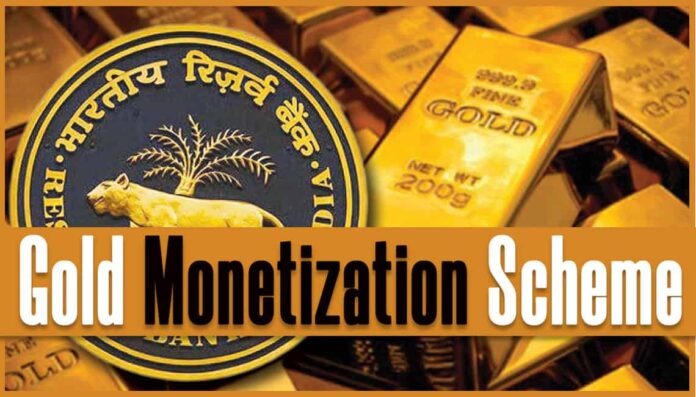Currently, the Reserve Bank of India (RBI) is holding about 660 tons of gold in its forex kitty. But Indian public and religious trusts hold more than 25000 tons of gold, which is the highest in the world.
In 2015, India implemented Gold Monetization Scheme (GMS), which could not succeed. It is not so viable for the government due to inflation in the gold price; that must be resolved.
It should also motivate depositors and protect them from probable tax hazards.Prime objectives should be pushing India to a high growth trajectory. For this, India needs cheaper funds for investing in infrastructure and other capital assets. That will attract cheaper global funds.
Another objective should be reducing gold import by selling and lending a part of the deposited gold to jewelers.
The sale proceeds will also provide cheaper funds to the government. The key strategy should be: the deposit of gold may be accepted as a part of forex kitty and the “Gold Deposit Certificate” (GDC) may be issued on behalf of the RBI by banks.
GDC from the RBI shall provide high security and comfort to gold depositors.
These GDC should be tradable and transferable. The trading of GDC must be integrated with the stock exchange and be converted to a “liquid security paper”. By this, the demand of gold by investors, about 250-300 tons per year, shall be met through “Paper gold” (GDC) and the import shall reduce to that extent within 1-2 years.
For meeting balance consumption demand, the RBI may sell part of deposited gold through designated agencies.
By this, the trade deficit shall reduce by about 2.1% of GDP which shall directly add to GDP. As a crucial strategy, unsold stock of gold, being the most dependable international currency, may be treated as a part of forex reserves.
Unsold gold stock shall be an “international asset” against the “domestic liabilities” in the balance sheet of the RBI. By this, India will be with the surplus “international asset” and its sovereign rating shall leap.
Eventually, that will appreciate the rupee. The RBI shall redeem GDC to GDC holder “on-demand” basis in the shape of physical gold only along with the accrued interest. Simple interest should be applied annually on the value during the deposit.
Thus, the unsold stock shall always exceed 50% of the deposited gold. More so, the sizeable interest-free funds shall be available with the RBI towards unpaid accrued interest.
With proper incentives, India might receive 6000 tons of gold deposits in the next five years. That will boost GDP by 3.5-4.5% along with several other benefits, as estimated and quantified in the aforesaid book.
All stakeholders such as depositors, RBI, Government, banks, jewelers, and the public shall be beneficiaries. At this juncture, this scheme could be indeed a game-changer.
However, it is imperative to enact structural reforms boosting investment rate and making India globally competitive along with such financial innovation for delivering long-ranging benefits to the economy.
Follow and connect with us on Facebook, LinkedIn & Twitter

